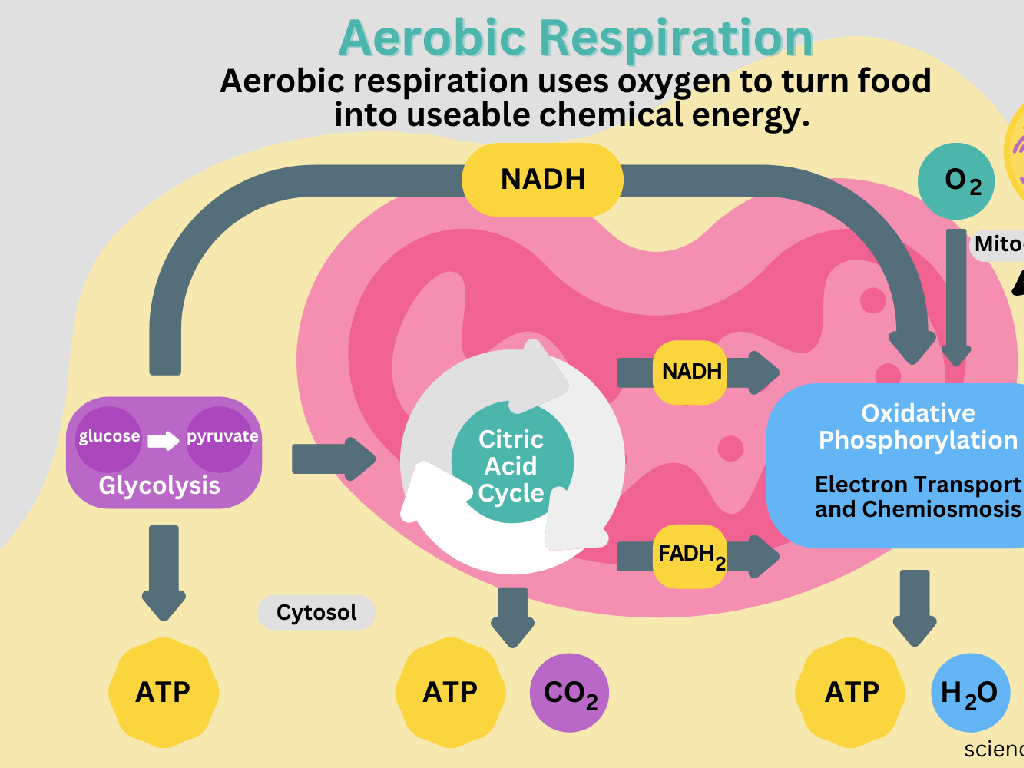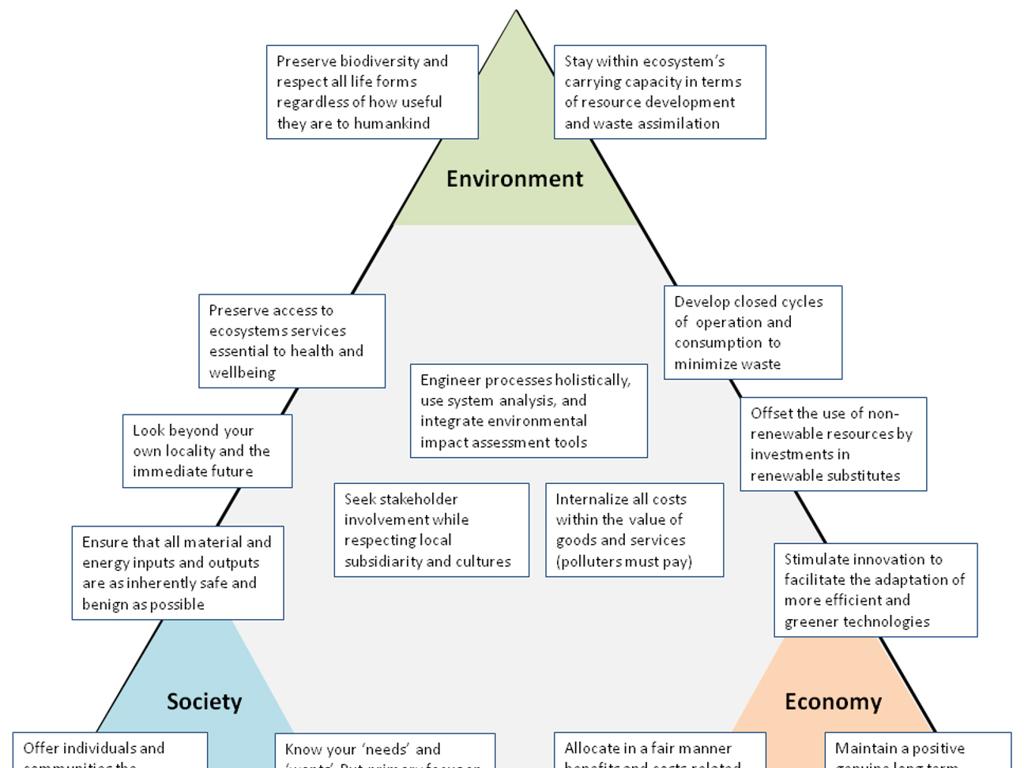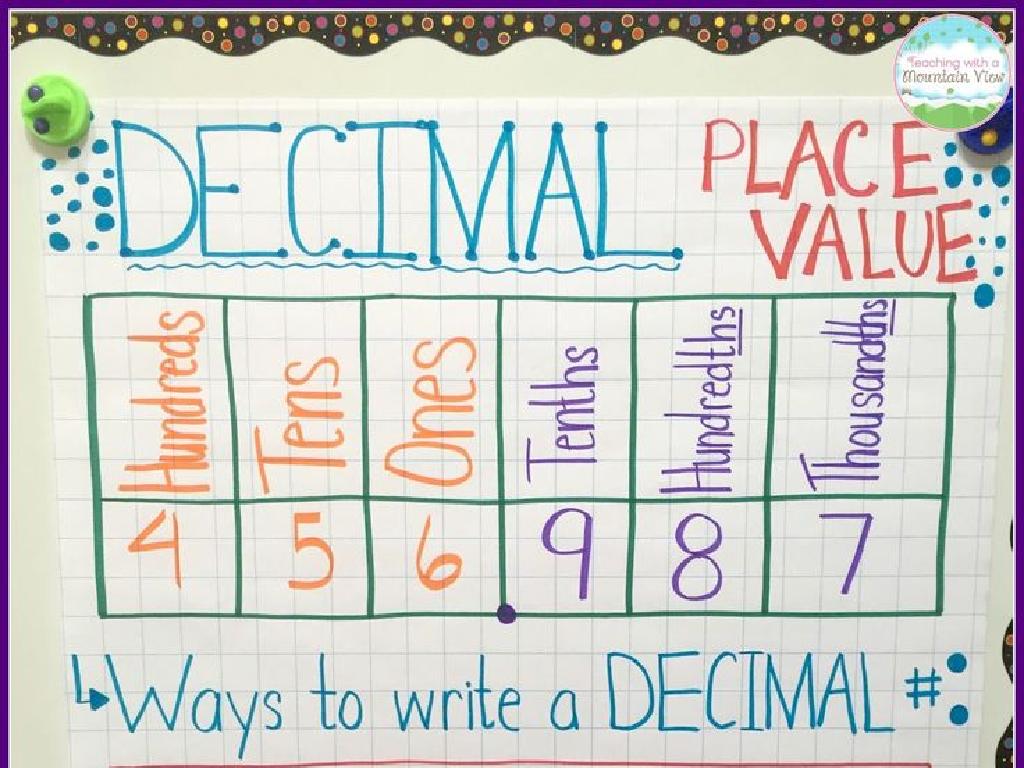Identify Prepositional Phrases
Subject: Language arts
Grade: Eighth grade
Topic: Adjectives And Adverbs
Please LOG IN to download the presentation. Access is available to registered users only.
View More Content
Enhancing Writing with Prepositional Phrases
– Define prepositional phrases
– Groups of words starting with a preposition, ending with a noun/pronoun.
– Explore adjectives and adverbs
– Adjectives describe nouns; adverbs modify verbs, adjectives, or other adverbs.
– Examples in sentences
– ‘Under the table’, ‘after the show’, ‘beside the blue car’.
– Impact on writing quality
– They add detail, clarity, and flow to sentences, making writing more engaging.
|
This slide introduces prepositional phrases and their role in conjunction with adjectives and adverbs to enhance writing. Start by defining prepositional phrases and how they function within a sentence. Explain the difference between adjectives and adverbs, and how prepositional phrases can act as either to add more detail. Provide clear examples to illustrate their use in sentences. Emphasize the importance of these phrases in adding depth and clarity to writing, making it more vivid and interesting for the reader. Encourage students to practice identifying and using prepositional phrases in their own writing to improve their language skills.
Understanding Prepositional Phrases
– Define prepositional phrase
– A phrase starting with a preposition and ending with its object or object’s modifier
– Common prepositions: in, on, at
– Prepositional phrase components
– Consists of a preposition (e.g., in, on, at) and the object it refers to
– Usage in sentences
– ‘Under the table’, ‘around the corner’, ‘at the door’
|
A prepositional phrase begins with a preposition and ends with the object of the preposition, which can be a noun, pronoun, or a noun phrase. It often includes modifiers describing the object. Prepositional phrases can function as adjectives or adverbs, providing additional details about time, location, or manner. Examples help students recognize prepositional phrases in reading and use them in their writing to add detail and complexity. Encourage students to create sentences using prepositional phrases and identify the phrase’s components to reinforce their understanding.
Identifying Prepositional Phrases
– Finding prepositional phrases
– Look for words that show relationships between nouns/pronouns and other words.
– Preposition and object identification
– The preposition is the ‘relationship’ word; the object is the noun/pronoun linked to.
– Practice with sample sentences
– ‘Under the table’, ‘under’ is the preposition, ‘table’ is the object.
|
This slide aims to teach students how to identify prepositional phrases within sentences. Start by explaining that prepositional phrases begin with a preposition and include the object of the preposition, which is the noun or pronoun that follows it. Emphasize that these phrases provide additional information about time, location, or direction. During practice, encourage students to locate the prepositional phrase in a sentence and identify both the preposition and its object. Provide several examples and ask students to explain the relationship the prepositional phrase establishes in the sentence. This exercise will enhance their understanding of sentence structure and improve their ability to use adjectives and adverbs effectively.
Role of Prepositional Phrases in Sentences
– Prepositional phrases as adjectives
– Describe nouns or pronouns. Example: The book on the table is mine.
– Prepositional phrases as adverbs
– Modify verbs, adjectives, or adverbs. Example: She ran towards the finish line.
– Enhance descriptions in text
– They add detail to help visualize a scene or action.
– Provide clarity to sentences
– They specify ‘how’, ‘when’, ‘where’, ‘why’, or ‘to what extent’.
|
This slide aims to teach students about the versatile role of prepositional phrases in sentences, particularly as adjectives and adverbs. Prepositional phrases as adjectives provide additional information about a noun or pronoun, often indicating location or possession. When functioning as adverbs, these phrases modify verbs and can provide context about the action, such as direction or reason. By enhancing descriptions, prepositional phrases allow readers to form clearer and more vivid mental images of the text. Encourage students to practice identifying and using prepositional phrases to add depth to their writing. Provide exercises where they can rewrite sentences to include prepositional phrases for added clarity and detail.
Exploring Prepositional Phrases in Literature
– Identify phrases in a text excerpt
– Find prepositional phrases and their objects
– Discuss their effect on imagery
– Phrases often set the scene or give detail
– Group activity: paragraph analysis
– Choose a book paragraph, find and discuss phrases
– Understand phrases’ role in context
– See how phrases enhance the paragraph’s meaning
|
This slide aims to deepen students’ understanding of prepositional phrases within the context of literature. Begin by identifying prepositional phrases in a chosen literary excerpt. Discuss how these phrases contribute to creating vivid imagery and aid in the reader’s comprehension of the text. For the group activity, have students work in small groups to analyze a paragraph from a book, identifying the prepositional phrases and discussing their impact on the overall meaning and tone of the passage. This exercise will help students appreciate the nuances of language and its effect on storytelling. Encourage students to share their findings and reflections with the class to foster a collaborative learning environment.
Your Turn: Crafting Sentences with Prepositional Phrases
– Write sentences with prepositional phrases
– Include at least one prepositional phrase in each sentence
– Exchange sentences with a classmate
– Share and compare how you both used prepositional phrases
– Discuss the impact of prepositional phrases
– How do prepositional phrases enhance your sentences?
– Reflect on the usage in your writing
|
This activity slide encourages students to apply their knowledge of prepositional phrases by writing their own sentences and then sharing with a partner for feedback. The goal is to understand how prepositional phrases function within a sentence to provide additional detail and clarity. During the class discussion, focus on how these phrases can modify nouns and verbs, and the effect this has on the overall sentence structure. Encourage students to reflect on how the inclusion of prepositional phrases can improve their writing by making it more descriptive and precise. Provide guidance and examples if necessary, and ensure that each student has the opportunity to contribute to the discussion.
Class Activity: Prepositional Phrase Hunt
– Find prepositional phrases in text
– Look for words like ‘in’, ‘on’, ‘at’, ‘around’, and the phrases they are part of.
– Work in groups to discuss function
– Discuss how these phrases modify nouns or verbs in sentences.
– Present findings to the class
|
This activity is designed to help students identify and understand the role of prepositional phrases within sentences. Provide students with a text and have them underline or highlight prepositional phrases. In small groups, students will discuss the function of each identified phrase, whether it acts as an adjective or adverb, and how it relates to the rest of the sentence. After the group discussion, each group will present their findings to the class, explaining the function of the prepositional phrases they found. This will reinforce their understanding through collaboration and presentation. Possible texts for this activity could include excerpts from novels, articles, or poems that are appropriate for the eighth-grade level.
Review and Practice: Prepositional Phrases
– Recap on prepositional phrases
– A quick review of what prepositional phrases are and their role in sentences.
– Interactive quiz on phrases
– Test your understanding with a fun, interactive quiz.
– Engage in a Q&A session
– Ask questions about anything that’s unclear.
– Clarify any doubts
|
This slide is aimed at reinforcing the students’ knowledge of prepositional phrases. Begin with a brief review of prepositional phrases, highlighting their components and function within a sentence. Follow this with an interactive quiz to engage the students and assess their understanding in a fun way. Conclude with a Q&A session, providing an opportunity for students to ask questions and get clarifications on any aspects of prepositional phrases they find challenging. The teacher should be prepared with additional examples and explanations to ensure all students leave the class with a solid understanding of the topic.
Homework: Crafting Prepositional Phrases
– Write a descriptive paragraph
– Describe a place, event, or object vividly
– Include 5+ prepositional phrases
– Phrases like ‘under the table’, ‘during the storm’
– Share your paragraph next class
– Be ready to read it aloud or discuss
|
This homework assignment is designed to reinforce the students’ understanding of prepositional phrases and how they function within the context of writing. By composing a descriptive paragraph that includes at least five prepositional phrases, students will practice identifying and using these phrases to add detail and clarity to their writing. Encourage students to think creatively and use a variety of prepositional phrases. In the next class, students will have the opportunity to share their work, which will help build confidence in their writing abilities and allow for peer learning. As a teacher, be prepared to provide feedback and highlight effective use of prepositional phrases in students’ paragraphs.






